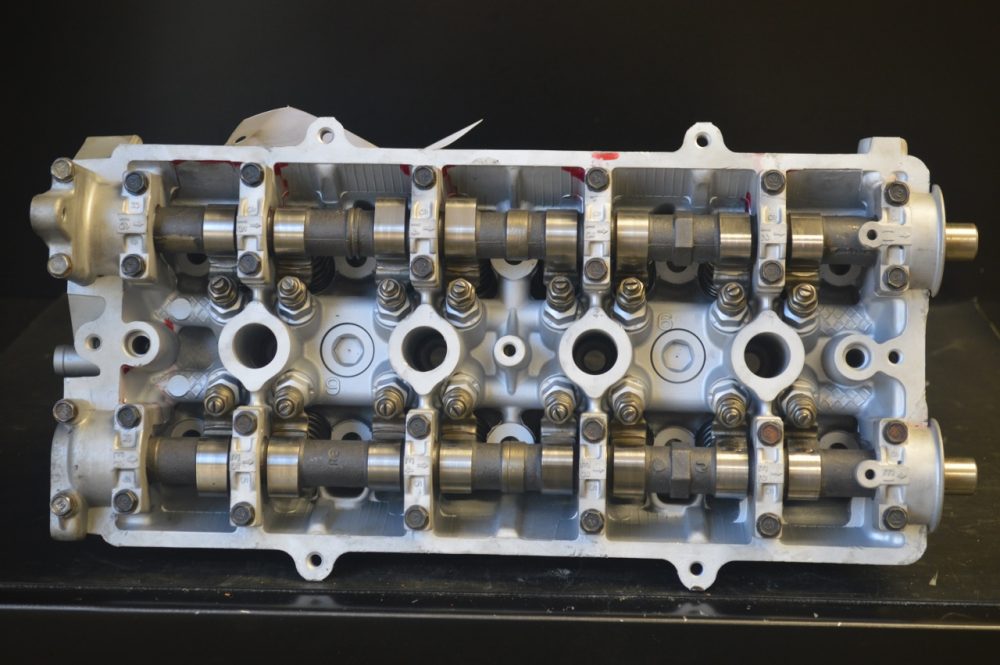All the carmakers have to upgrade their vehicles with time to keep their line-up up and rolling. Here in India most of the manufacturers chose to go for a generation change with many of their vehicles in order to comply with the new BS6 norms. With that, the prime reason was in terms of the engine. That was to make them BS6 ready.

Keeping that aside, Honda with the 5th gen ‘CITY’ converted their SOHC set up in the vehicle to a DOHC. So, you may wonder what exactly is DOHC and SOHC? and which one is better? and why? Let’s find out.
OHC (Over Head Cam)
Before diving deep, let’s have a briefing about what is OHC. An engine has a cylinder head that sits on top of the engine. Well, this cylinder head houses the cams that operate the valves. Cams? (These are the cylindrical rods with a varied number of lobes at different angles). Usually, it is the crankshaft that drives the cams. Now, what are valves you may ask? well, in laymen terms these are the gates for the exhaust and the intake ports.
Detailed Fact: In a 2 valve per cylinder setup, the Intake is bigger than the exhaust port. But, in a 3 valve setup, the exhaust valve is bigger than the intake, but the head has two intake valves instead of one, increasing the overall air/fuel mixture entering the cylinder. Again in a 4 valve head, the intake ports are bigger than the exhaust ports.
So, these cams operate the opening and the closing of the valves depending upon the stroke of the engine. This goes even deeper but not getting into the detail, there can be just one cam or at times 2, depending upon the design. With that clear, let’s take a look at the two types of OHCs and which one is better?
SOHC (Single Overhead Cam)

As the name suggests, SOHC is a single cam that controls the opening and closing of the valves. Usually, a single-cam can operate either 2 or at max 3 valves efficiently (sometimes 4 valves can also be operated via a single-cam but the values are quite restricted). In a 3 valve head, one valve is for the exhaust and the two valves are for the air/fuel mixture charge enter the combustion chamber.
Advantages of SHOC
- It is lighter than a DOHC setup.
- The SOHC setup involves less moving parts hence is easy to repair.
- As this setup is simpler, it is less expensive to maintain and manufacture.
- It is possible to extract power lower down in the rev range but settling with low high-end power.
DOHC (Dual Overhead Cam)

Well, DOHC is short for dual overhead cam and the is one of the advanced and prominent cam mechanism used in the engines. Unlike a SOHC setup, DOHC has two cams to operate the valves in the head. These two cams are capable of operating 4 valves per head with ease by offering a wide range of customisations.
Advantages of DOHC
- Firstly, DOHC has twice the number of cams and this allows the valves to be placed in the desired position for maximum output. This output can vary from more performance or better efficiency.
- Valve timing is one of the dominant units in extracting the most out of the engine. This is where the DOHC comes in. DOHC allows to precisely tune the valve timing for the better part.
- In an engine with dual camshafts the positing of the spark plug can also be altered to extract the most out of the engine, be it performance or efficiency. On the contrary, this is not possible with the SOHC setup as the cam usually has to be mounted directly over the head.
- Well, all the high revving motorcycles and cars use a DOHC head. This is because the engine running a DOHC setup is capable of producing power higher in the rev band, but has to compromise on the low-end punch.
- DOHC runs with less noise.
- Efficient than its SOHC counterpart. More number of cams give better control over the valves, from their position to their timings.
PS. One of the latest cars to have the DOHC setup comes from the house of Honda. The 5th Gen Honda City comes with dual overhead cams. On the contrary, the 4th gen Honda City has the same displacement but offers a SOHC setup.
For reference here is the difference between both the engine from Honda.
Engine Specs (Honda City)
|
||
| Honda City | 4th Gen (SOHC/i-VTEC) | 5th Gen (DOHC/i-VTEC) |
| Engine | 1497cc | 16-Valves | 1498cc | 16-Valves |
| Power | 119 PS @ 6600 rpm | 121 PS @ 6600 rpm |
| Torque | 145 Nm @ 4600 rpm | 145 Nm @ 4300 rpm |
Informative: Turbocharger and its Major Types | Variable Geometry (VGT) vs Fixed Geometry (FGT)
So, these were the main differences between a DOHC and a SOHC setup. Sure, both of them have some major points up their sleeves.
Also, Read What Is a TCU? Transmission Control Unit (TCU) Explained







i have read you complete blog.you have explain SOHC & DOHC very well. thanks.
I have given your blog link on my blog.
What is the meaning of penyetel celah katup in english?
As per Google Translate “penyetel celah katup” means valve clearance adjuster
Very nice & lucid explanation.
Thanks a lot Y V S SUBRAMANYAM! Comments like these help us do more for our readers. Keep reading, and keep loving the GoMechanic blog.